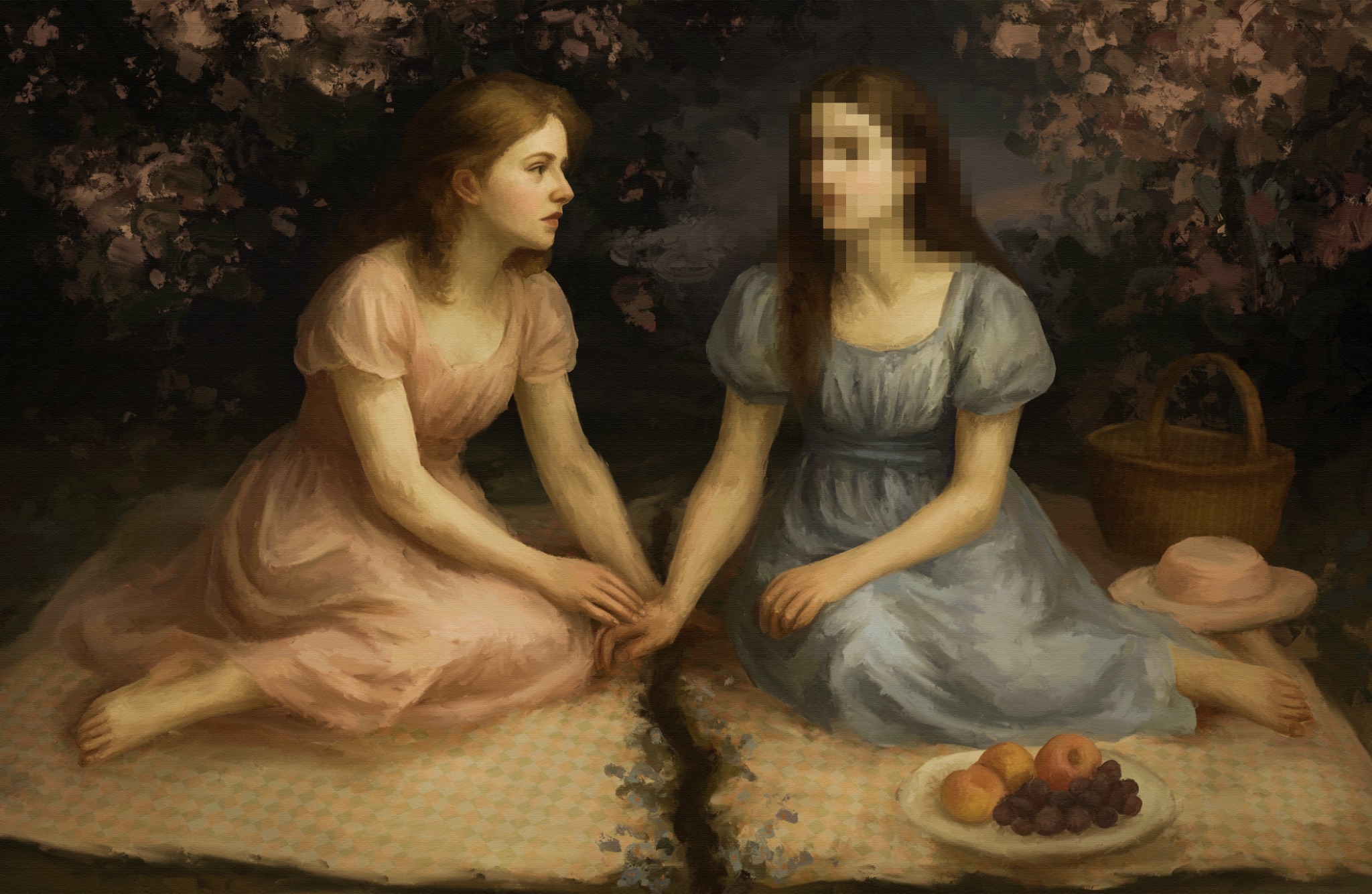
We Were Happy Once, Weren't We? (2025)
We Were Happy Once, Weren’t We explores the quiet grief of outgrown intimacy, the aftermath of giving someone everything and being left behind. Two young women sit on a picnic blanket beneath soft spring light, their pastel dresses glowing with nostalgia. Yet the tenderness fractures: one figure’s face is pixelated, her identity eroded into digital noise, and a jagged crack runs between their joined hands. What should be a pastoral moment of friendship becomes a portrait of absence, of one still reaching, and one already gone.
⤷ Cox merges the language of classical composition with modern digital distortion, transforming a Rococo-like idyll into an emotional autopsy. The pixelation functions as both censorship and decay: a friendship collapsing into unreality, a memory degraded through time and heartbreak. The crack between the figures. thin yet unbridgeable, serves as the painting’s wound, splitting the scene into past and present.
Soft light and muted hues belie the emotional violence underneath. The stillness aches; the viewer feels the unspoken sentence lingering between the two: we were happy once, weren’t we? It’s not a question of nostalgia, but of survival — who remembers whom, and who has already been rewritten.
0 Comments Add a Comment?